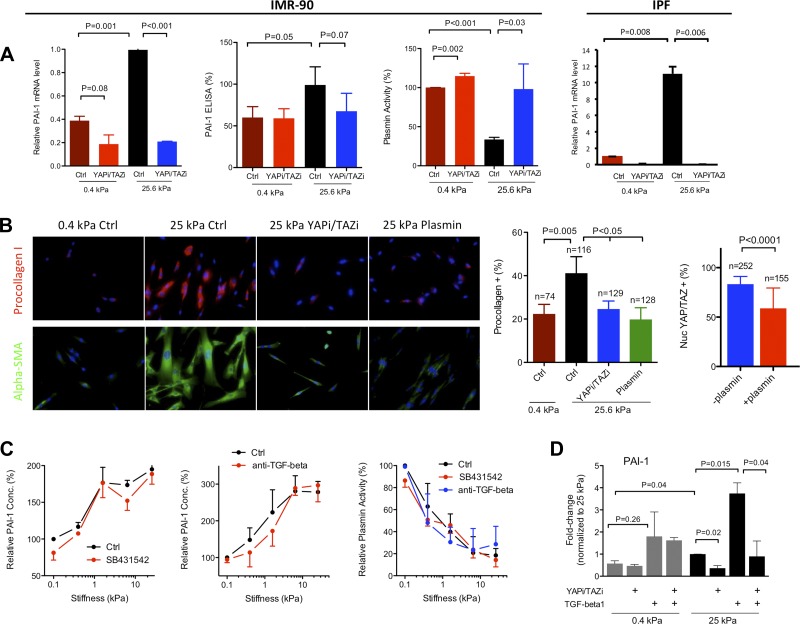Fig. 6.
Matrix stiffness promotes profibrotic functions through the YAP/TAZ target plasminogen activator inhibitor (PAI)-1. A: increasing matrix stiffness promotes IMR-90 fibroblast PAI-1 (SERPINE1) gene expression and PAI-1 protein levels in conditioned media while decreasing plasmin activity (n = 3 independent experiments). YAP/TAZ siRNA knockdown selectively attenuates matrix stiffness-promoted PAI-1 expression on stiff matrices and correspondingly increases plasmin activity on stiff matrices. IPF fibroblasts exhibit similar stiffness- and YAP/TAZ-dependent PAI-1 (SERPINE1) expression (n = 2 independent experiments). B: exogenous plasmin (0.1 U/ml) attenuates matrix stiffness-promoted procollagen I and α-smooth muscle actin (SMA) expression on stiff matrices in a fashion similar to YAP/TAZ siRNA knockdown. Plasmin also significantly reduces the proportion of fibroblasts with predominant nuclear localization of YAP/TAZ on stiff matrices; n = number of cells analyzed per condition. C: inhibition of transforming growth factor (TGF)-β receptor with ALK5 inhibitor SB431542 (1 μM) or a pan anti-TGF-β antibody (10 μg/ml) has no effect on matrix stiffness-induced PAI-1 protein production or plasmin activity decrease in IMR-90-conditioned media (n = 2 independent experiments). D: exogenous TGF-β (2 μg/ml) potentiates matrix stiffness-promoted PAI-1 gene expression. YAP/TAZ siRNA double knockdown (YAPi/TAZi) ablates TGF-β effect on stiff matrices but has no effect on soft matrices (n = 2 independent experiments).

